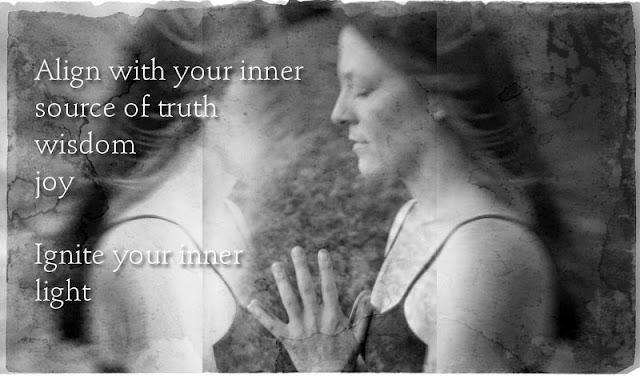Over the next couple of months my blogging will be focused on the topic of “Teaching Yoga” and is especially geared towards Yoga Teachers. However, any person interested in self-growth and/or a regular student of yoga should not hesitate to read further. Looking through the lens of a teacher (of any subject) can be illuminating and enlightening. Enjoy!
All of the topics to follow are excerpts and/or summaries from my forthcoming book: Teaching Yoga—A Definitive Guide.
In the last few blogs I have been sharing with you a foundational approach to teaching and practicing yoga that involves cultivating awareness of the body, breath, and mind.
All yoga, no matter what the “style” or “tradition”, facilitates the development of these three things. Together they help anchor us in the moment and become intimate with ourselves.
What I have discovered through personal practice and in my teaching is that there can be an over-emphasis on the practice itself—the attainment of postures, the mastery of breath control techniques, and/or a successful meditation practice. It is an illusion that if we just perfect the postures, become more flexible, breathe just right, or sit for a whole hour in meditation, then we will be enlightened, then we will be “good enough” and deemed a real Yogi. However, when you stop focusing on whether or not you can touch your toes yet you free up your attention to be redirected inward where you then can begin to engage with your self—body, breath, and mind—in an enlightened way filled with awareness.
The next time you come to your mat ask, “May the practice of yoga help me understand the deep internal workings of my Self. May I become aware of my body. May I become aware of my breath. May I become aware of my mind. May I know my True Self through this cultivation of awareness.”
Breath Awareness
In my last blog I discussed how the development of Body Awareness is a key ingredient necessary for the experience of Yoga to occur. Today I’ll be discussing Breath Awareness, ingredient number two.
In yoga philosophy the breath or Pranamaya Kosha is seen as the second layer of the ego-self that must be illuminated for yoga to be attained and our true self to be discovered.
Breathing is a physical act. I remember when I first began yoga when the teacher would ask for us to follow the breath I would mentally say to myself, “breathing in, breathing out”. I was so disconnected from my body that it did not occur to me that it was my body that was actually doing the breathing. I was thinking about the process as it was happening, but I was, at the time, incapable of feeling it and thus being in my body.
Remembering this first experience and my gradual learning and embodiment of my self—body, breath, and mind, I would like to share with you a few ways to invite more breath awareness into your practice and/or teaching.
1.Feel the primary pathway of the breath.
As a teacher it can be helpful to realize that many yoga students (especially beginning students) have limited body-breath awareness. If you ask them to follow, notice, or be aware of their breath it is hard to say how they will interpret this. They may simply “think” their way through the practice. Providing your students with physical “breathing” landmarks can take them deeper inside their body and help them begin to expand their awareness. Try these examples. Use the word feel to elicit embodiment of the process versus the intellectualizing of it.
*The nose – tip and nostrils
*The windpipe
*The lungs – bottom to top, front to back, side to side
*Thoracic Diaphragm
Focus on just one area asking your students to feel the movement of the breath there or guide them in letting their attention travel with the breath along the entire path from nose to thoracic diaphragm on the inhalation and thoracic diaphragm to nose on the exhalation. This can be a stand-alone practice done while sitting or in savasana or it can be explored in any yoga asana.
2. Feel the secondary pathway of the breath.
More experienced students can be guided in feeling the secondary pathway of the breath. This pathway includes any movement that occurs throughout the body and energy field outside of the primary pathway (nose, windpipe, lungs, and diaphragm). Some areas to consider are:
*Belly
*Spine
*Pelvis
*Legs
*Arms
*Head
A good starting point for beginners is to feel the movement of the breath down in the belly. Asking students to place their hands on their belly can reinforce body awareness and help to get their attention anchored inside. Instruct them to feel the belly expand into their hands on their inhalation and to feel their belly withdraw from their hands on their exhalation.
3. Utilize different instructional words for breathing and begin to note how they impact your practice and/or your students experience.
As a yoga teacher you may find yourself saying time and time again, “Take a deep breath”. While there is nothing wrong with this, I encourage you to define for yourself what it means to you. Once you are clear, share this with your students and allow it to morph and change as your level of embodiment and body-breath awareness deepens. People take deep breaths in a variety of ways and depending on an individuals life experiences taking a deep breath may actually be stress-inducing. Try utilizing these different instructions to invoke greater overall breath awareness.
*Take a deep breath
*Take a relaxed breath
*Receive the breath
*Drink in the breath
*Be breathed
*Breathe into the bottom of your lungs
*Breathe out until you feel an internal squeeze
Happy Exploring! I welcome any comments and/or questions you may have.
Next blog post I will be detailing the last foundational ingredient of yoga—mind awareness.

